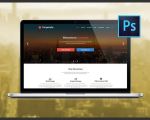- 1-Understanding-Web-Design-Costs
- 2-Factors-Influencing-Website-Designer-Pricing
- 3-Typical-Pricing-Models-for-Web-Designers
- 4-Case-Study-Web-Design-Budgeting
- 5-Balancing-Cost-and-Quality-in-Web-Design
- 6-Tips-for-Hiring-a-Website-Designer
- 7-Where-to-Find-the-Best-Web-Design-Services
1. Understanding Web Design Costs
One of the first questions many business owners ask is, how much do you pay a website designer? Web design costs vary widely depending on project complexity, designer expertise, and client requirements. Understanding these costs upfront helps you plan a realistic budget and avoid surprises.
Costs can range from a few hundred dollars for simple templates to tens of thousands for fully customized, feature-rich websites. Knowing what influences these numbers is key to making an informed decision.
2. Factors Influencing Website Designer Pricing
Several factors affect how much you pay a website designer, including:
- Scope and Complexity: E-commerce sites or those requiring custom functionality cost more than simple informational pages.
- Experience and Reputation: Established designers with strong portfolios typically charge higher rates.
- Design Customization: Fully bespoke designs require more time and resources.
- Content Creation: Some designers include copywriting or media production, increasing costs.
- Ongoing Support: Maintenance and updates after launch add to the budget.
Understanding these elements helps clarify why pricing varies so much from one project to another.
3. Typical Pricing Models for Web Designers
Web designers generally use one of several pricing models:
- Hourly Rate: Charging by the hour is common for smaller tasks or ongoing projects. Rates can range from $30 to $150+ per hour.
- Flat Fee: A fixed price for a project is typical for clearly defined scopes, providing budget certainty.
- Package Pricing: Designers offer bundled services like design, development, and SEO at set prices.
Choosing the right pricing model depends on your project needs and budget flexibility.
4. Case Study: Web Design Budgeting for a Small Business
A small startup wanted a professional website with e-commerce capabilities but had a limited budget. After consulting with a few designers, they opted for a flat fee project that included a customized design and basic SEO setup. The final cost was around $5,000. The designer provided clear milestones and frequent updates, resulting in a site that boosted sales within months.
This example highlights the importance of clear communication and realistic budgeting when deciding how much to pay a website designer.
5. Balancing Cost and Quality in Web Design
While it might be tempting to choose the cheapest option, low costs often mean compromises in design quality, user experience, or technical performance. Conversely, the most expensive designers aren’t always the best fit for your project.
Striking the right balance between cost and quality ensures you get a website that meets your goals and delivers value over time.
6. Tips for Hiring a Website Designer
When considering how much do you pay a website designer, keep these tips in mind:
- Review portfolios to gauge style and expertise.
- Ask for detailed quotes and compare pricing structures.
- Clarify project timelines and deliverables.
- Check client testimonials and references.
- Discuss post-launch support and maintenance.
These steps help you avoid costly mistakes and find a designer aligned with your vision.
7. Where to Find the Best Web Design Services
For businesses ready to invest in professional web design, platforms like SitePoint 24 offer access to vetted designers and comprehensive service packages. Whether you want a simple brochure site or a complex online store, SitePoint 24 connects you with experts who match your budget and goals.
Exploring such resources ensures you make an informed decision about how much to pay a website designer while securing quality results that drive success.








